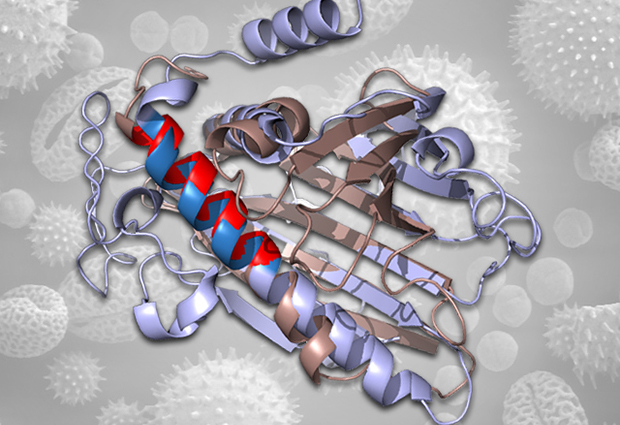
Read the latest Issue
Molecular similarities in food and environmental proteins that cause allergy (such as pollen), and multicellular parasites have been identified systematically for the first time. The findings, published in PLOS Computational Biology, help demonstrate the evolutionary basis for allergy.

The study, led by EMBL-EBI, was an interdisciplinary collaboration with the University of Cambridge, the University of Edinburgh and the Ugandan Ministry of Health. The findings support the hypothesis that allergic reactions are a flawed antibody response towards harmless environmental allergens.
It is thought that part of our immune system has evolved to combat and provide immunity against infection by parasitic worms. However, in the absence of parasitic infection, this same arm of the immune system can become hyper-responsive and mistakenly target allergenic proteins in food or the environment. This results in an unregulated allergic response, which can sometimes be lethal.
The researchers used computational techniques to predict which proteins in parasitic worms would cause an immune response similar to an allergic reaction in humans. Their experimental studies supported these predictions and, for the first time, they identified a protein in a parasitic worm that is similar to a protein that was previously thought to be encoded only in the genomes of plants. This protein is one of the most common proteins in pollen that causes allergy in humans.
“This study provides tools that will make it easier for scientists to predict proteins in food and the environment that are likely to cause allergy, and to design protein molecules for treating allergy,” says EMBL-EBI alumnus Nicholas Furnham, now at the London School of Hygiene & Tropical Medicine. “Our findings address an outstanding question: what makes an allergen an allergen? We’ve shown that the off-target effects of the immune system in allergy are due to the significant molecular similarities we have identified between environmental allergens and parasitic worm proteins. The findings demonstrate that allergy is the price we pay for having immunity to parasites.”
“We wanted to understand why the immune system can handle parasites so well, but sometimes goes out of control when dealing with harmless things like pollens,” explains Nidhi Tyagi of EMBL-EBI. “To do that, we looked at the molecular features of common allergens and parasites to see what proteins they had in common. Our results pointed to allergies potentially being side effects of the defence mechanism against parasites. So, people who have suffered chronic infection by worms might not suffer so much from allergies – in other words, we might have become ‘too clean’ for our own good.”
This post was originally published on EMBL-EBI News.
Looking for past print editions of EMBLetc.? Browse our archive, going back 20 years.
EMBLetc. archive